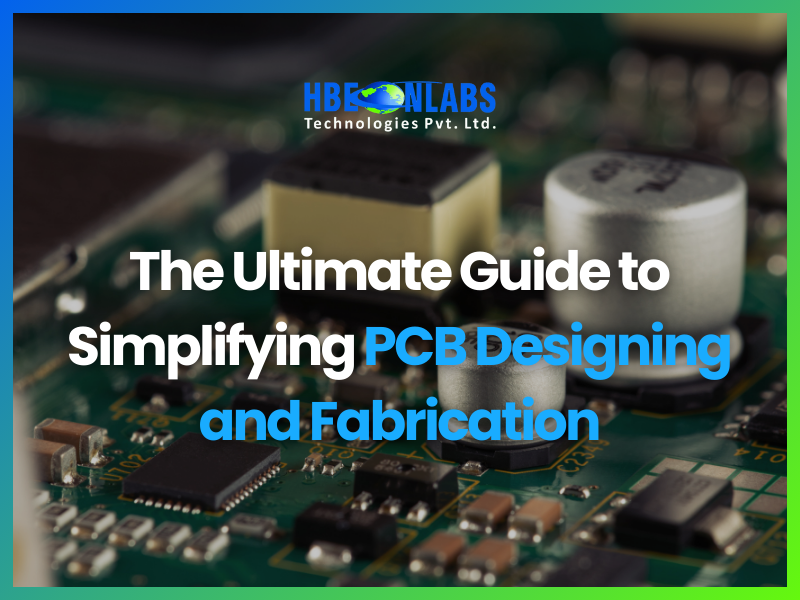Address:
Plot No. B-6/5, Site 5 Surajpur Industrial Area, Block F, Surajpur Site V, Greater Noida, Uttar Pradesh 201306
For Business: +91 9212314779
For Careers: +91 84483 40400
Landline: 0120-4298000


Printed Circuit Boards (PCBs) form the backbone of almost all modern electronic devices. As the demand for more sophisticated and compact devices grows, the need for advanced PCB design and fabrication processes has become more critical. This guide will delve into what PCB designing and fabrication entail, highlight the latest trends and best practices, and offer a streamlined approach to simplifying the process.
What is PCB Designing and Fabrication?
PCB Designing: This involves creating a blueprint for the circuit board using specialized software. The design process includes placing components, routing electrical connections, and ensuring the layout meets all technical specifications and standards. Key tools used in PCB design include CAD (Computer-Aided Design) software like ALTIUM, KiCad,EasyEDA, which helps in creating precise schematics and layouts.
PCB Fabrication: Once the design is finalized, the fabrication process begins. This involves turning the design into a physical board. The process includes printing the design onto a substrate, etching away unwanted copper, drilling holes for components, and applying solder masks and silkscreen printing. Advanced fabrication techniques now incorporate high-speed laminates, flexible substrates, and other innovative materials to enhance performance and reliability.
Why Simplify PCB Designing and Fabrication?
Simplifying these processes can significantly reduce production time, costs, and errors. It also enables quicker prototyping and iteration, allowing designers to bring products to market faster. Efficient PCB design and fabrication are crucial for meeting the growing demands for high-performance and compact electronic devices.
Latest Trends in PCB Design and Fabrication
Miniaturization and High-Density Interconnects (HDI): The push for smaller, more compact devices has led to the development of HDI technology, which allows for higher component density without compromising performance.
Advanced Materials: The use of materials like thermally conductive substrates and dielectric materials improves thermal management and signal integrity, essential for high-power applications.
Automation and AI Integration: Automation in PCB design and fabrication, including AI-powered error checking and automated routing, enhances precision and reduces the likelihood of costly mistakes.
5G Technology: PCBs must now handle higher frequencies and faster data transmission rates, making advanced materials and innovative design techniques more critical than ever.
Sustainability: There is a growing focus on green PCB manufacturing practices, including the use of environmentally friendly materials and processes to reduce the ecological footprint of electronics production.
Simplifying the PCB Design and Fabrication Process
Start with Clear Requirements: Define the functional and technical requirements of the PCB. This includes understanding the electrical, thermal, and mechanical constraints of your design.
Leverage Advanced Design Tools: Use modern CAD software with built-in error-checking and simulation capabilities. Tools like thermal simulation software can predict the thermal behavior of the PCB, allowing for proactive thermal management.
Optimize Component Placement: Proper placement of components can significantly affect the performance and reliability of the PCB. Ensure components are placed to minimize signal interference and optimize thermal dissipation.
Focus on Manufacturing Constraints: Design with manufacturability in mind. This includes considering the capabilities of your fabrication partner and ensuring the design can be produced reliably and cost-effectively.
Iterative Prototyping and Testing: Use rapid prototyping techniques to create and test multiple iterations of your PCB design. This helps in identifying and resolving issues early in the development process.
Example: Simplifying the Process at HbeonLabs
At HbeonLabs, we’ve embraced these best practices to streamline our PCB design and fabrication processes. By effectively using advanced design tools and focusing on automation, we’ve been able to reduce production times and improve the reliability of our PCBs. For instance, our use of thermal simulation tools has enabled us to design PCBs that effectively manage heat dissipation, ensuring stable operation even under demanding conditions.
The PCB industry is set for continued growth and innovation, driven by the need for more powerful, efficient, and compact electronic devices. By simplifying the design and fabrication processes, leveraging advanced materials and tools, and adopting best practices, manufacturers can stay ahead of the curve and meet the rising demands of the market.